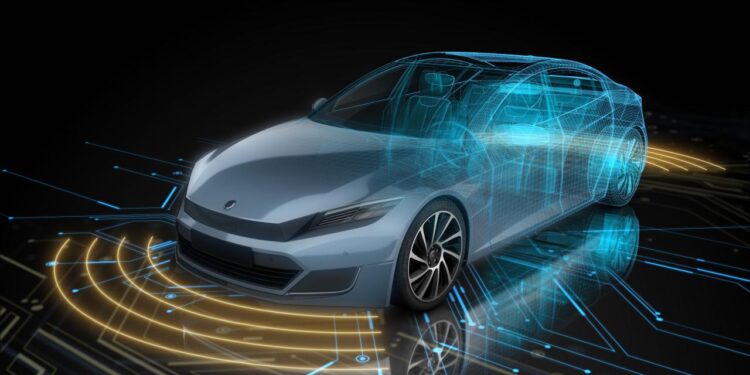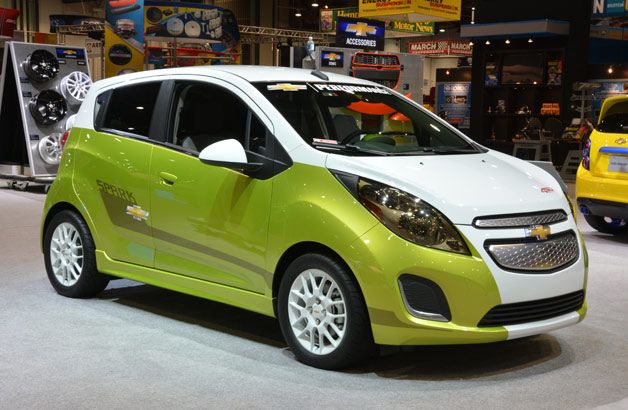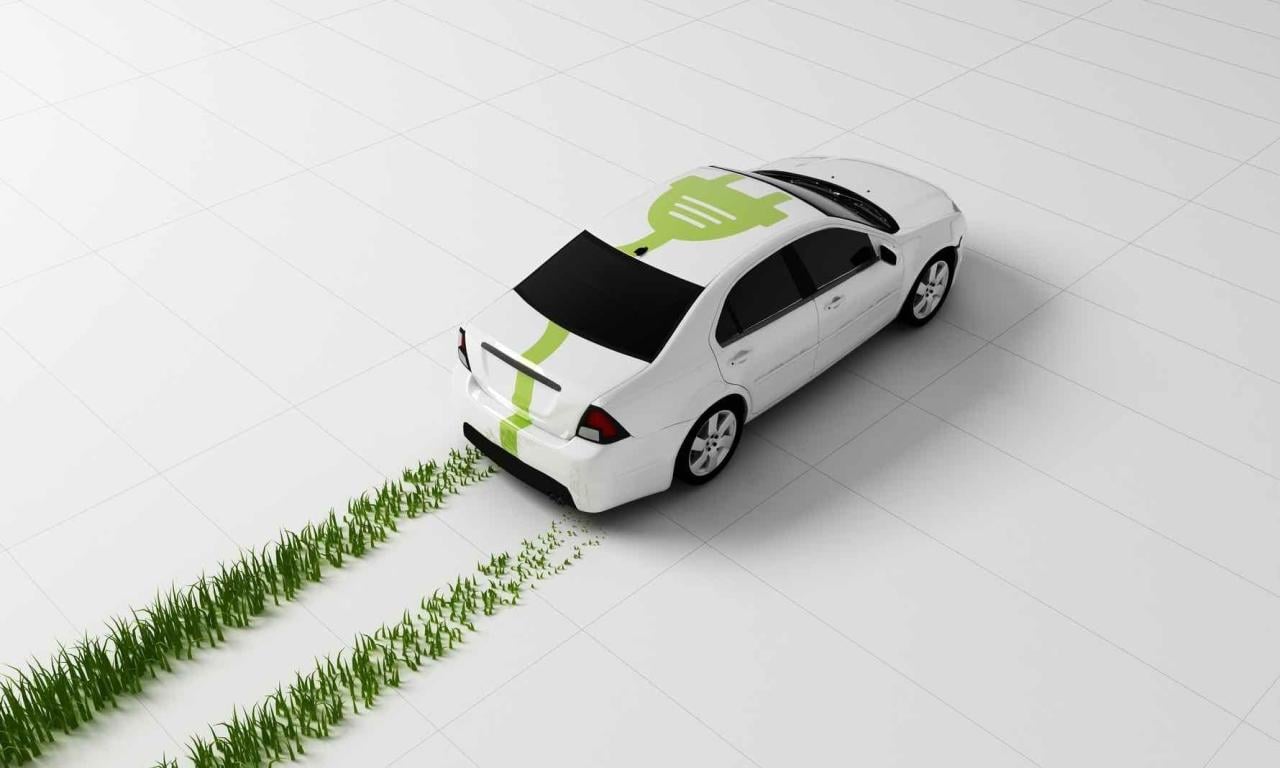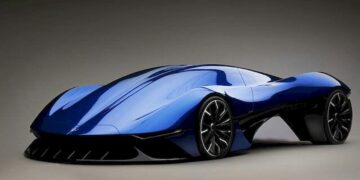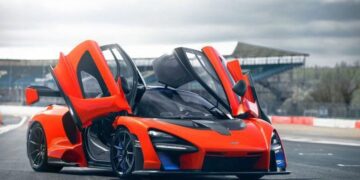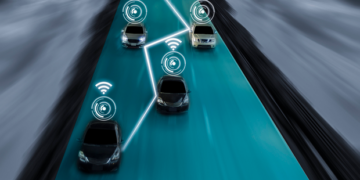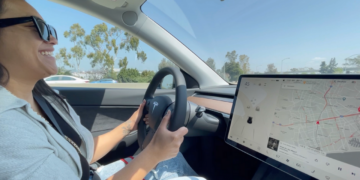The automotive industry is undergoing a remarkable transformation, led by a surge of hybrid breakthroughs that are redefining vehicle design, performance, and sustainability. Over the past decade, technological advancements have catalyzed the evolution of hybrid cars from niche experimental models into mainstream vehicles that blend traditional combustion engines with electric power. This comprehensive article examines the evolution of hybrid technology, the innovations driving the industry’s rapid transformation, and the wide-ranging impacts on the environment, economy, and consumer behavior. In addition, the article discusses future trends and challenges, providing an in-depth perspective on how hybrid breakthroughs are reshaping the global automotive landscape.
The Evolution of Hybrid Technology
Hybrid vehicles represent a fusion of two distinct propulsion systems – a conventional internal combustion engine (ICE) and an electric motor powered by a battery. The concept of combining these two power sources emerged decades ago as engineers sought to increase fuel efficiency while reducing harmful emissions. Early hybrid designs laid the groundwork for modern systems, but it is the recent innovations that have truly sparked an industry revolution.
A. Historical Milestones
Hybrid technology’s journey began in the late 19th century when pioneers experimented with electric and combustion power. However, it wasn’t until the late 20th century that hybrid vehicles started to appear in the mainstream market. In the 1990s, automakers began integrating hybrid systems into production models, setting the stage for a more energy-efficient future. Early models faced challenges such as high production costs and limited battery performance, yet they served as a proof of concept for the potential benefits of hybrid technology.
B. Modern Developments
Recent decades have witnessed a dramatic leap in hybrid innovation. Today’s hybrid vehicles are characterized by advanced battery technologies, sophisticated energy management systems, and integration with digital control systems that optimize performance. Modern hybrids are designed not only to improve fuel efficiency but also to enhance driving dynamics and reduce environmental impact. These vehicles are now considered a vital component of the global strategy to mitigate climate change while addressing the growing demand for sustainable mobility.
C. Types of Hybrid Systems
Hybrid vehicles come in various configurations, each offering different benefits and performance characteristics. The primary types include:
A. Mild Hybrids:
Mild hybrids use a small electric motor to assist the combustion engine during acceleration and deceleration, providing a modest boost in fuel efficiency without the ability to drive solely on electric power.
B. Full Hybrids:
Full hybrids have more powerful electric motors and larger batteries. They can operate on electric power alone for short distances and seamlessly switch between electric and gasoline power as conditions demand.
C. Plug-In Hybrids (PHEVs):
PHEVs feature larger batteries that can be recharged via an external power source. This allows them to travel longer distances on electric power alone before switching to the internal combustion engine.
D. Series Hybrids:
In a series hybrid, the internal combustion engine serves primarily as a generator to charge the battery, which in turn powers the electric motor. This configuration emphasizes efficiency and reduced emissions.
E. Parallel Hybrids:
Parallel hybrids allow both the combustion engine and the electric motor to provide power simultaneously, delivering a balance between performance and efficiency.
Technological Innovations Driving Hybrid Breakthroughs
Recent innovations in hybrid technology have been fueled by rapid advancements in materials science, digital technology, and renewable energy. These innovations have addressed previous limitations and opened up new possibilities for automotive performance and sustainability.
A. Battery Technology Advancements
Battery performance has long been a critical factor in the success of hybrid vehicles. The evolution of lithium-ion batteries, along with ongoing research into solid-state batteries, has dramatically increased energy density, reduced charging times, and extended overall battery lifespan. These advancements not only improve fuel economy but also contribute to safer and more reliable hybrid systems.
Key improvements in battery technology include:
A. Increased Energy Density: Modern batteries store more energy in a smaller volume, enabling longer electric-only driving ranges.
B. Faster Charging Capabilities: Enhanced battery chemistry and improved charging protocols have reduced the time required to recharge, making hybrids more convenient for everyday use.
C. Extended Lifespan: Innovations in battery management systems have prolonged the operational life of batteries, reducing maintenance costs and environmental waste.
D. Improved Thermal Management: Advanced cooling systems help maintain optimal battery temperatures, ensuring efficient performance even under demanding conditions.
B. Regenerative Braking Systems
Another significant breakthrough in hybrid technology is the development of regenerative braking systems. These systems capture kinetic energy during braking and convert it into electrical energy, which is then stored in the battery. This process not only increases energy efficiency but also reduces wear on traditional braking components. Regenerative braking is a cornerstone of hybrid vehicle efficiency and has inspired further innovations in energy recovery technologies.
C. Integration of Digital Control Systems
The integration of digital control systems, including artificial intelligence (AI) and the Internet of Things (IoT), has revolutionized hybrid vehicle management. These systems optimize the distribution of power between the combustion engine and the electric motor, ensuring that each component operates at peak efficiency. AI-driven algorithms analyze driving patterns, environmental conditions, and energy usage in real time, dynamically adjusting performance settings for optimal results.
D. Lightweight Materials and Structural Innovations
Reducing vehicle weight is essential for maximizing fuel efficiency and performance in hybrid cars. Advances in lightweight materials such as high-strength steel, aluminum alloys, and carbon fiber composites have enabled manufacturers to design vehicles that are both robust and fuel-efficient. Structural innovations include improved chassis design, aerodynamic bodywork, and the integration of energy-absorbing materials that enhance safety without compromising efficiency.
E. Advanced Transmission Systems
Modern hybrid vehicles also benefit from sophisticated transmission systems that optimize power delivery. Continuously Variable Transmissions (CVTs) and dual-clutch transmissions (DCTs) are increasingly common in hybrid models. These systems provide smooth acceleration, improve fuel economy, and ensure that the hybrid powertrain operates efficiently across a range of driving conditions.
Environmental and Economic Impacts
The surge in hybrid innovations is not only transforming vehicle technology but also delivering significant environmental and economic benefits. As governments around the world implement stricter emissions regulations and consumers become more environmentally conscious, the demand for hybrid vehicles is growing rapidly.
A. Environmental Benefits
Hybrid vehicles contribute to a cleaner environment by reducing greenhouse gas emissions and lowering fuel consumption. The environmental benefits of hybrids include:
A. Reduced Carbon Footprint: By combining electric and combustion power, hybrids emit fewer pollutants compared to conventional vehicles.
B. Improved Air Quality: Lower emissions contribute to cleaner air in urban areas, reducing respiratory health risks for residents.
C. Conservation of Energy Resources: Hybrid systems optimize fuel usage, reducing dependence on fossil fuels and supporting energy sustainability.
D. Lower Noise Pollution: Electric motors produce less noise than combustion engines, contributing to quieter urban environments.
B. Economic Advantages
From an economic standpoint, hybrid vehicles offer both consumers and manufacturers tangible benefits. Some key economic impacts are:
A. Fuel Savings: Increased fuel efficiency translates into lower operating costs for drivers, making hybrids an attractive option for long-term savings.
B. Incentives and Subsidies: Many governments offer tax incentives, rebates, and other financial benefits to promote the adoption of hybrid technology.
C. Market Expansion: The growing demand for eco-friendly vehicles has spurred competition and innovation among automakers, driving market growth and job creation.
D. Cost Reduction Over Time: As production scales up and battery technology improves, the cost of hybrid vehicles is expected to decline, making them more accessible to a broader range of consumers.
C. Societal Impact
The widespread adoption of hybrid vehicles is also influencing societal trends. Urban planning is evolving to support sustainable mobility, with increased investments in charging infrastructure, public transportation, and green urban spaces. Furthermore, the rise of hybrid technology is spurring research and development in related fields, including renewable energy and smart grid technologies, creating a ripple effect across multiple industries.
Overcoming Challenges in Hybrid Innovation
Despite the many benefits, the automotive industry faces several challenges in the continued development and adoption of hybrid vehicles. Addressing these issues is critical to ensuring the long-term success and sustainability of hybrid technology.
A. Technological and Manufacturing Challenges
Hybrid systems are inherently complex, integrating multiple technologies into a single vehicle platform. Key challenges include:
A. Battery Cost and Supply: Although battery prices have fallen over the years, the cost and supply chain management of high-quality batteries remain significant hurdles.
B. Integration Complexity: Combining two power sources requires advanced control systems and seamless integration of hardware and software, which can be challenging to perfect.
C. Thermal Management: Ensuring optimal operating temperatures for both the battery and the combustion engine is crucial, particularly under extreme conditions.
B. Infrastructure Limitations
The success of hybrid vehicles also depends on the supporting infrastructure. For plug-in hybrids in particular, access to reliable charging networks is essential. Challenges include:
A. Charging Station Availability: Many regions still lack an extensive network of charging stations, which can deter potential buyers.
B. Grid Capacity: Increased demand for electricity, especially during peak hours, can strain local power grids, necessitating upgrades and smart grid solutions.
C. Standardization: The lack of standardized charging protocols and connectors can lead to compatibility issues and consumer confusion.
C. Regulatory and Policy Barriers
Government policies play a crucial role in the adoption of hybrid technology. However, regulatory challenges may hinder progress:
A. Emissions Standards: While stricter emissions standards drive innovation, they can also pose challenges for manufacturers trying to balance performance with compliance.
B. Subsidy Fluctuations: Changes in government incentives and subsidies can impact consumer demand and market stability.
C. Trade and Tariff Issues: Global supply chain complexities, including tariffs on imported components, may affect production costs and market prices.
D. Consumer Perception and Adoption
Despite the clear benefits, consumer acceptance of hybrid vehicles is not universal. Key issues include:
A. Perceived Complexity: Some consumers view hybrid technology as overly complex or difficult to maintain.
B. Upfront Costs: The initial purchase price of hybrid vehicles can be higher than that of conventional cars, despite long-term savings on fuel.
C. Range Anxiety: Even though hybrids offer electric-only modes, concerns about battery range and reliability can influence buyer decisions.
The Future of Hybrid Innovations
Looking ahead, the future of hybrid technology appears bright as continuous innovation promises even greater improvements in efficiency, performance, and sustainability. Several trends are likely to shape the future of the automotive industry:
A. Integration with Full Electric Vehicles
As the industry evolves, we can expect to see a blending of hybrid and full electric technologies. Automakers are investing in research that bridges the gap between traditional hybrids and battery-electric vehicles (BEVs), creating platforms that offer the best of both worlds—extended range, quick refueling options, and enhanced performance.
B. Advancements in Battery Research
Continued research in battery chemistry and materials is expected to yield breakthroughs that further reduce costs, enhance energy density, and improve safety. Solid-state batteries, in particular, hold promise for delivering superior performance compared to current lithium-ion models, potentially revolutionizing both hybrid and fully electric vehicles.
C. Smart and Connected Vehicles
The convergence of hybrid technology with smart, connected vehicle systems is set to redefine mobility. Integration with advanced driver-assistance systems (ADAS), vehicle-to-everything (V2X) communication, and real-time data analytics will create vehicles that are not only energy-efficient but also safer and more responsive to dynamic driving conditions.
D. Sustainable Manufacturing Practices
As consumer demand for eco-friendly vehicles grows, automakers are increasingly adopting sustainable manufacturing practices. This includes the use of recycled materials, energy-efficient production processes, and environmentally responsible supply chain management. These practices not only reduce the carbon footprint of hybrid vehicles but also enhance brand reputation and consumer trust.
E. Global Policy and Market Expansion
Government initiatives aimed at reducing carbon emissions and promoting green technology will continue to drive the expansion of the hybrid market. International agreements, national policies, and local incentives are expected to bolster investments in hybrid and electric vehicle technologies, leading to increased market penetration and broader consumer adoption.
Case Studies and Success Stories
Real-world examples provide compelling evidence of how hybrid breakthroughs are revolutionizing the automotive industry. Consider the following case studies that highlight successful implementations of hybrid technology:
A. A Leading Japanese Automaker
One of the pioneers in hybrid technology, a renowned Japanese automaker, has consistently pushed the boundaries of innovation. Their flagship hybrid models have not only set new standards in fuel efficiency and reduced emissions but have also won numerous awards for design and performance. Through continuous research and development, the company has expanded its hybrid lineup to include models in virtually every segment—from compact cars to luxury sedans.
B. European Innovation in Hybrid Sports Cars
In Europe, a notable automotive manufacturer has combined high performance with hybrid efficiency in its latest sports car model. This innovative vehicle boasts cutting-edge features such as advanced regenerative braking, seamless power transition, and intelligent energy management systems. The success of this model has spurred further research into performance hybrids, proving that sustainability does not have to come at the cost of speed or driving excitement.
C. North American Market Penetration
In North America, consumer demand for environmentally friendly vehicles has led to a surge in hybrid car sales. Several manufacturers have introduced hybrid versions of popular models, offering improved fuel economy and reduced emissions without sacrificing performance. Strategic partnerships with technology firms have also led to the development of integrated digital systems that enhance both safety and driving experience.
Impact on the Global Automotive Market
The widespread adoption of hybrid innovations is influencing the global automotive market in several significant ways:
A. Market Diversification
Hybrid vehicles are driving diversification within the automotive industry. Manufacturers are now offering a wide array of hybrid models tailored to different market segments and consumer preferences. This diversification not only broadens the market base but also fosters healthy competition, driving further innovation across the industry.
B. Competitive Advantage
Companies that invest in hybrid technology gain a competitive edge by appealing to increasingly eco-conscious consumers. Enhanced fuel efficiency, lower emissions, and cutting-edge technology are key selling points that differentiate hybrid vehicles from traditional combustion engine models. This advantage is prompting a shift in market dynamics, with hybrid technology becoming a critical factor in consumer purchasing decisions.
C. Supply Chain and Manufacturing Shifts
The rise of hybrid vehicles is also reshaping supply chains and manufacturing processes. Automakers are forging new partnerships with battery manufacturers, electronics suppliers, and technology firms. In turn, this integration is leading to more streamlined production processes, cost efficiencies, and faster innovation cycles. Additionally, the increased focus on sustainable practices is encouraging manufacturers to adopt greener production methods and invest in renewable energy sources.
The Role of Innovation Ecosystems
Hybrid breakthroughs do not occur in isolation. They are the result of a vibrant innovation ecosystem that includes research institutions, technology startups, government agencies, and industry collaborations. This ecosystem plays a pivotal role in:
A. Driving Research and Development: Collaborative efforts between universities and automakers are leading to breakthroughs in battery technology, AI integration, and materials science.
B. Fostering Startups: Numerous startups are emerging with innovative solutions that complement hybrid technologies, from energy management systems to smart sensor integration.
C. Policy Support: Government initiatives and subsidies are providing critical financial support, enabling companies to invest in long-term research and development.
D. Global Collaboration: International partnerships are accelerating the adoption of hybrid technologies across borders, sharing best practices and fostering a unified approach to sustainable mobility.
Challenges and Future Outlook
Despite the rapid progress, several challenges remain. Addressing these challenges will be critical for sustaining the momentum of hybrid innovations.
A. Cost Management
While production costs are gradually declining, the upfront cost of hybrid technology, particularly high-performance batteries, remains a concern. Research into alternative materials and more efficient manufacturing processes is vital to reduce costs further.
B. Infrastructure Development
For plug-in hybrids, the development of a robust charging infrastructure is essential. Governments and private entities must collaborate to expand charging networks and upgrade power grids to meet the increasing demand for electricity.
C. Consumer Education
Educating consumers about the benefits and functionalities of hybrid vehicles is crucial. Overcoming misconceptions and providing clear information about maintenance, range, and cost savings will help boost adoption rates.
D. Technological Integration
As vehicles become increasingly digital, integrating multiple systems—ranging from hybrid powertrains to autonomous driving features—presents a complex technical challenge. Continuous improvements in software and hardware integration are necessary to ensure seamless performance and reliability.
Conclusion
Hybrid breakthroughs are at the heart of a revolution that is reshaping the automotive industry. With advancements in battery technology, regenerative braking, digital control systems, and lightweight materials, modern hybrid vehicles offer a compelling blend of efficiency, performance, and sustainability. As the global market shifts toward eco-friendly mobility, these innovations are setting new standards for what vehicles can achieve—reducing emissions, lowering fuel costs, and providing a smoother, more responsive driving experience.
The journey toward a more sustainable future is supported by collaborative innovation ecosystems that bring together academia, industry, startups, and governments. Together, they are overcoming challenges such as cost management, infrastructure limitations, and technological integration to propel hybrid technology into mainstream adoption.
Looking ahead, the future of hybrid vehicles appears bright. With continuous advancements and an increasing focus on environmental sustainability, hybrid technology is poised to further disrupt traditional automotive paradigms and drive the industry toward a greener, more efficient future.
By embracing these transformative innovations, automakers and consumers alike can benefit from reduced environmental impact, improved economic efficiency, and enhanced driving experiences. The revolution is well underway, and hybrid breakthroughs are leading the charge toward a sustainable automotive landscape.

